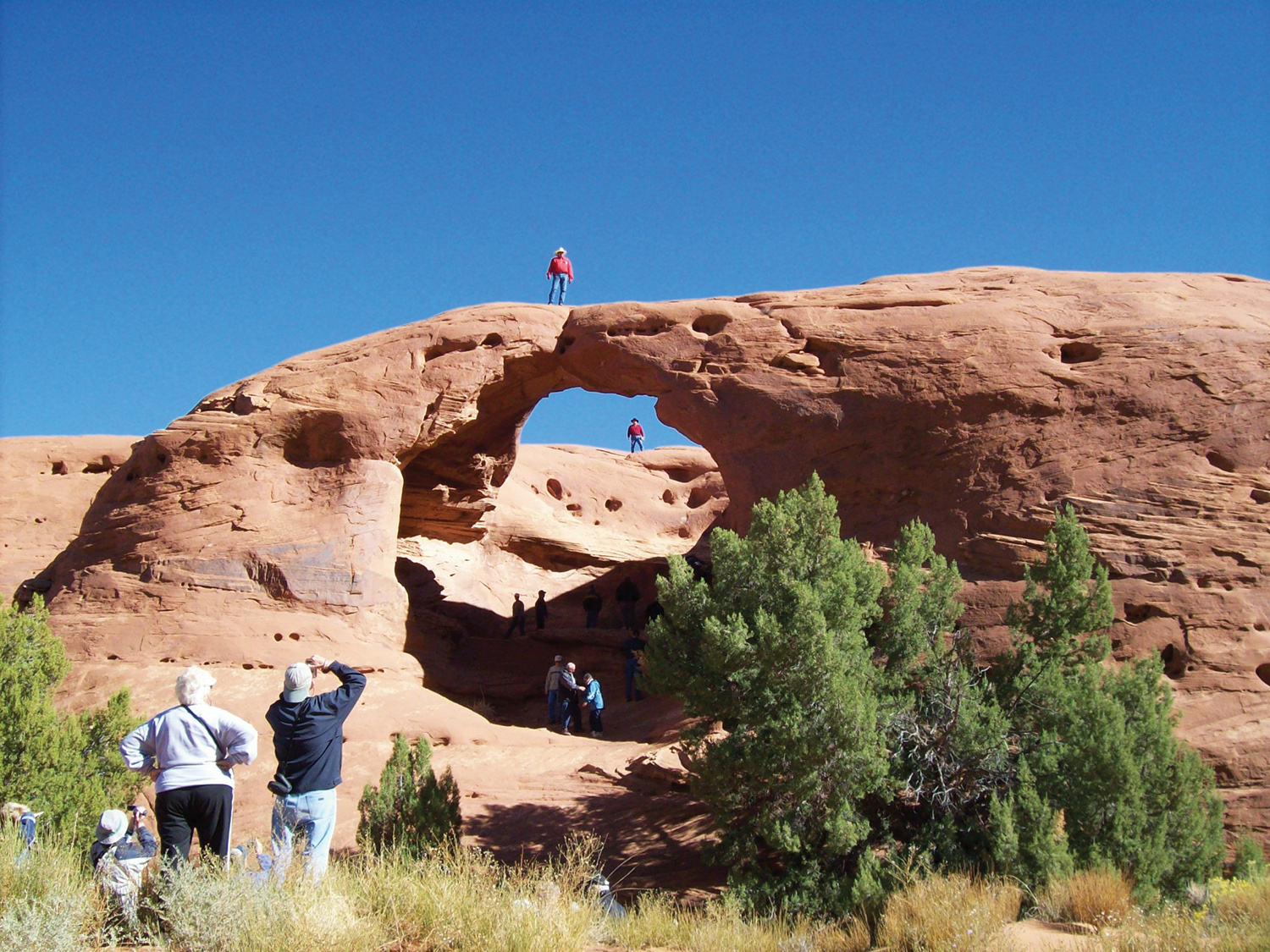Lead Photo: Our Navajo Guides stand on top of the archway and rock behind.
Monument Valley In the land of the Navajo Nation
By M.B. Wilson – the “Wagonmaster”
“When travelling to southern Utah for the first time, it is fair to ask – if the red rocks were cut would they bleed? When travelling to Utah’s desert for the second or third time, it is fair to assume that they do, that the blood of the rocks gives life to the country.”
Terry Tempest Williams Coyote’s Canyon 1887
It was just a little over 32 years ago when due to a tragedy in my family I decided to take a trip west to visit my Aunt Ruth in Hollywood, California. I had made this trip several times before, but this time I decided to travel a very different route.
Back in ’76 I owned a 1974 Winnebago Brave motorhome, and I had a dream of following the pioneer routes to California. Once I reached the western states, I decided to explore the back roads of Colorado instead of following the major highways.
I made my way out to Denver and headed south on I-25 to a small town called Walsenburg, where I started my adventure by heading due west on Highway 160. It wasn’t long before I began to understand the hardships that the pioneers must have endured a century before I came along. I started my climb into the mountains, passing through the North La Veta Pass, and as the saying goes, “What goes up, must come down”. When I finally reached the top of Wolf Creek Pass, the view was absolutely fabulous – but the road was a little scary. It was one hairpin turn after another all the way to the valley floor, thousands of feet below. I crossed my fingers and toes, shifted into low gear, and hoped that the brakes were still in top shape.
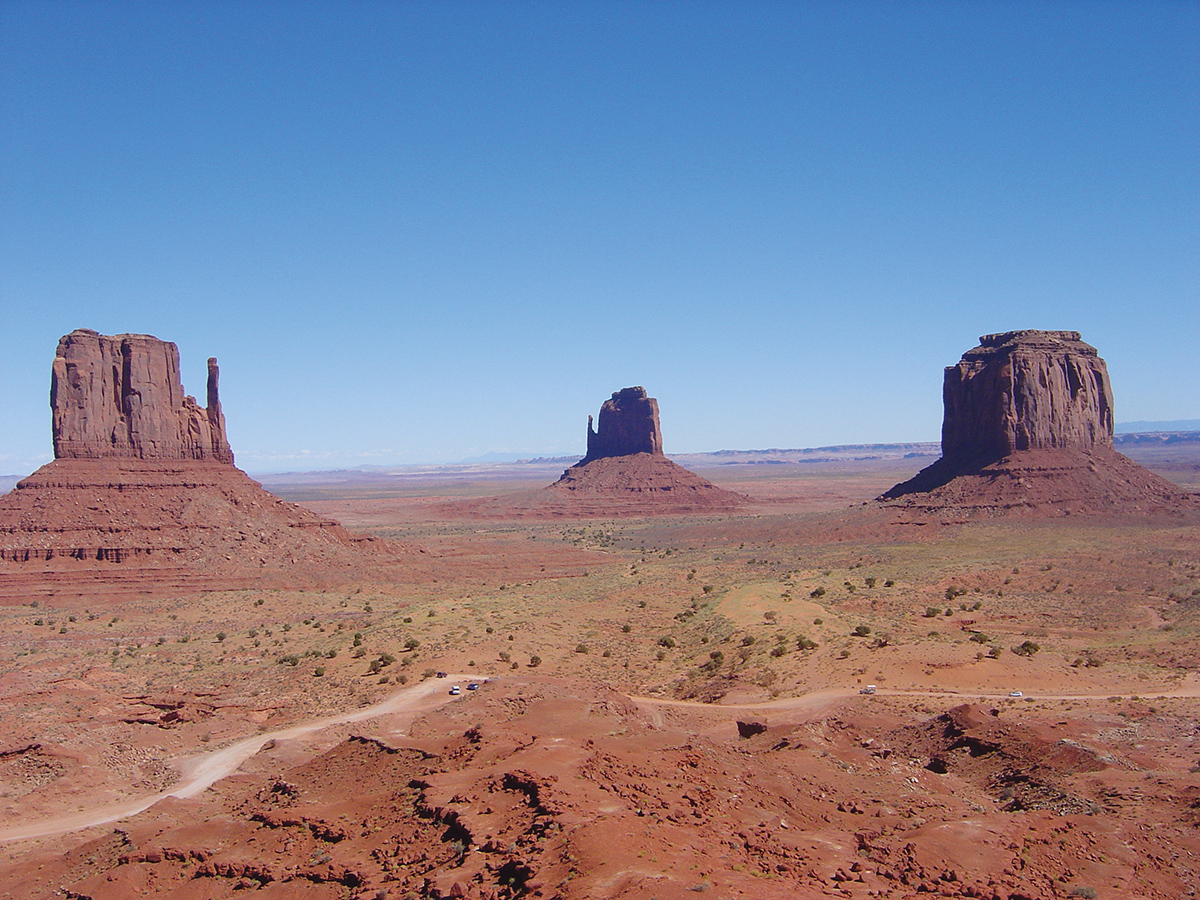
After surviving the long descent down the windward side of the mountains, I came to Durango, a town that was founded in 1880 when the Denver & Rio Grande Railroad built a track to Silverton and established Durango as the hub of its rail system. Many of the original buildings constructed by Durango’s pioneers are still standing and are used today for a variety of purposes.
From Durango, I moved on to the town of Cortez, where the mountains meet the desert, nestled between the 14,000-foot San Juan Mountain peaks and the canyons of the Ancients National Monument. Cortez is at the center of an ancient Indian civilization, and evidence of the number of early dwellers can be seen everywhere. It is an amazing experience to walk through the territory that had been the focal point for the ancient settlements – Mesa Verde National Park, Anasazi Heritage Center, Canyons of the Ancients and Crow Canyon just to name a few.
I experienced my first ever dust storm. Arriving at the campground in Cortez, the campground owner came out and told me to park behind the barn and face my motorhome east. I parked where he suggested, and went back to the camp store, only to be met by a tirade of language that would have made a longshoreman blush… I made the mistake of asking what was wrong – “look west, into the desert – what do you see?” was the response – “it looks like a thunderstorm,” I said. The reply came with a passion – “no, that’s a dust storm, and it’s going to dry up all the rain, and we haven’t had rain in six months!”
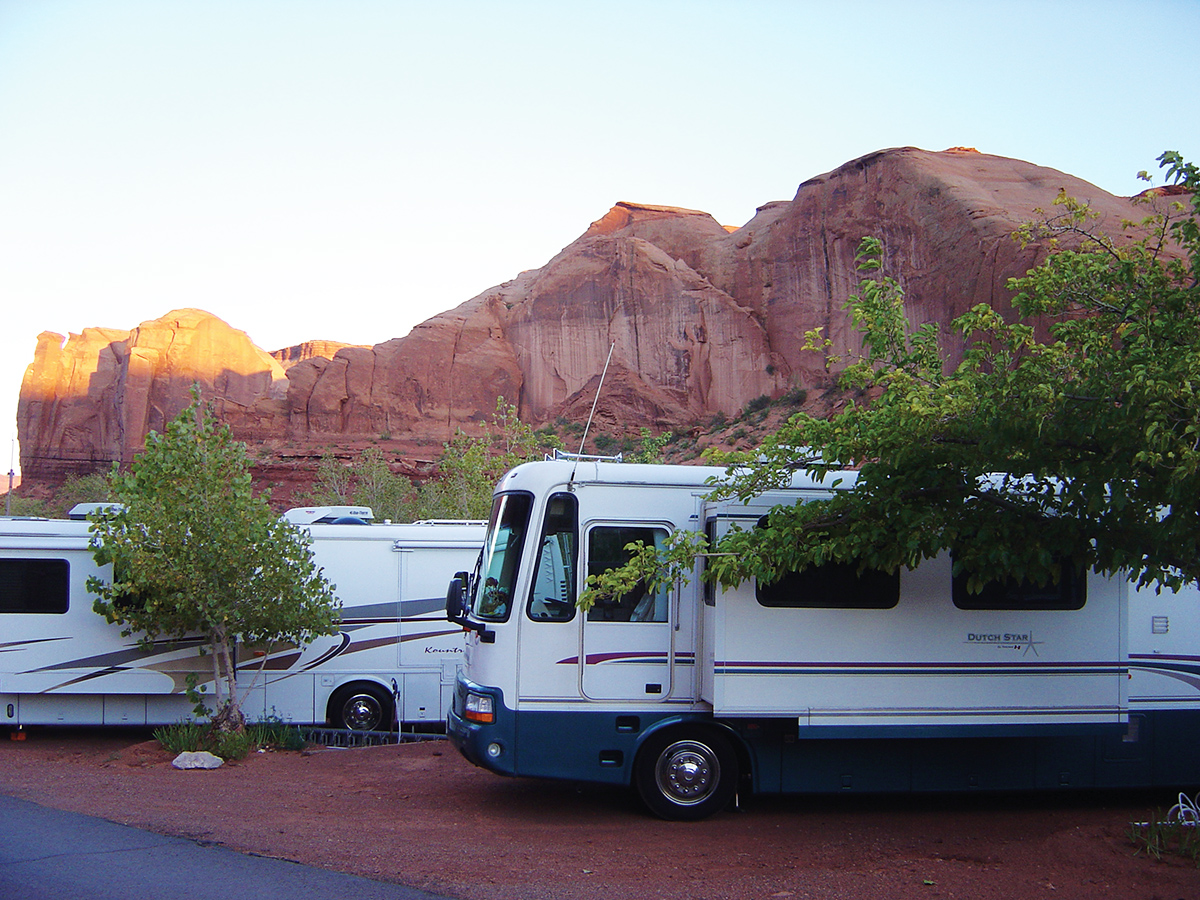
The campground owner told me that I should get back into my motorhome, and make sure there were no open windows or vents. Sure enough, I did what I was told, and the storm came, and brought with it high wind and dust as fine as talcum powder that got into absolutely everything. It looked like a blizzard, but it was hot, and dry, and very, very, disturbing. After a couple of hours, the storm blew over, and sure enough, all the water in the area had disappeared – just like the old man said, the storm dried up everything in sight.
The following day I was back on highway 160, on my way to Four Corners, where the Four Corners Monument marks the quadripoint in the Navajo Nation and Ute Mountain Tribal Lands in the Southwest United States. This is the point where the states of Arizona, Colorado, Utah, and New Mexico meet, and the only place in the United States where the boundaries of four states intersect. Today, the Four Corners Monument is a place where travelers can meet the native tribes, and barter for their crafts.
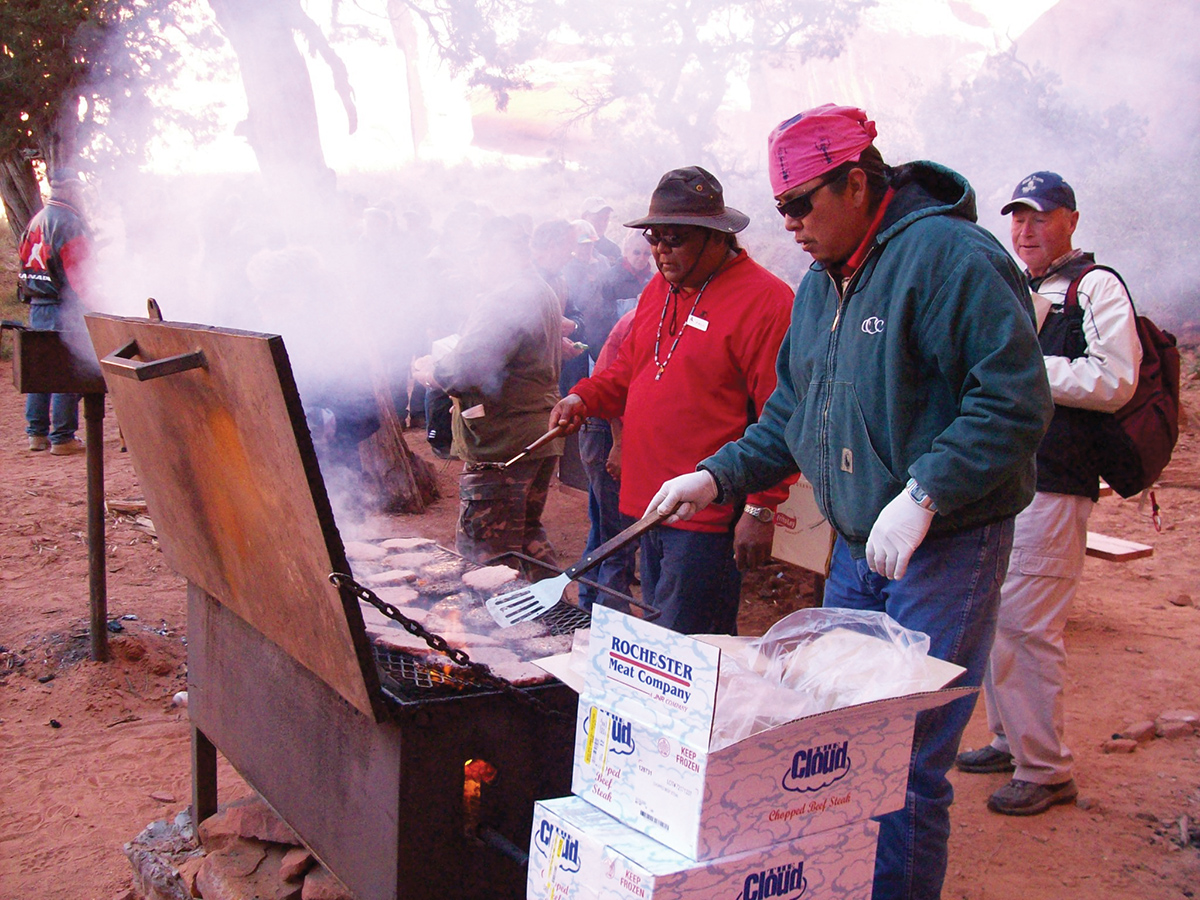
Continuing southwest on Highway 160, I began to traverse the state of Arizona. I arrived in a town called Kayenta and stopped for fuel, when I noticed a sign for Monument Valley. At this point in my life, IU was working in movie theatres, and I was a big fan of John Wayne. I knew that the movie “The Searchers” had been made in Monument Valley, but I always thought that this was a place that only existed on some remote movie lot… I asked one of the local residents what Monument Valley was like, and he told me that it was unbelievable, and well worth the 30-mile detour up Highway 163. I headed the Brave north in search of the scenery that made John Wayne’s western movies come to life.
Monument Valley, Utah, is absolutely spectacular. Rocky outcroppings, canyons, and tumbleweed – just like every cowboy movie you have ever seen, and more – so much more – the expanse of the terrain is simply beyond description. I had discovered one of the most enduring and definitive images of the American West – Monument Valley Navajo Tribal Park, where isolated red mesas and buttes are surrounded by an expanse of empty sandy desert… it is as remote as any place on earth, yet so familiar because it was the setting for so many of the western movies we all watched as children.
Monument Valley is not a valley in the conventional sense, but rather a flat, mainly desolate landscape surrounded by crumbling rock formations that rise hundreds of feet into the air. The last remnants of the sandstone layers that once covered the region are eroded by the dry winds that howl through the rock formations.
Stopping at the visitor center, I learned that there was a full hookup campground at Goulding’s Lodge and Campground just on the other side of the highway. Sure enough, nestled near the lodge, in tranquil Rock Door Canyon, is Goulding’s Campground, where red rock frames the camping area and the sunrises are the most beautiful I have ever seen.
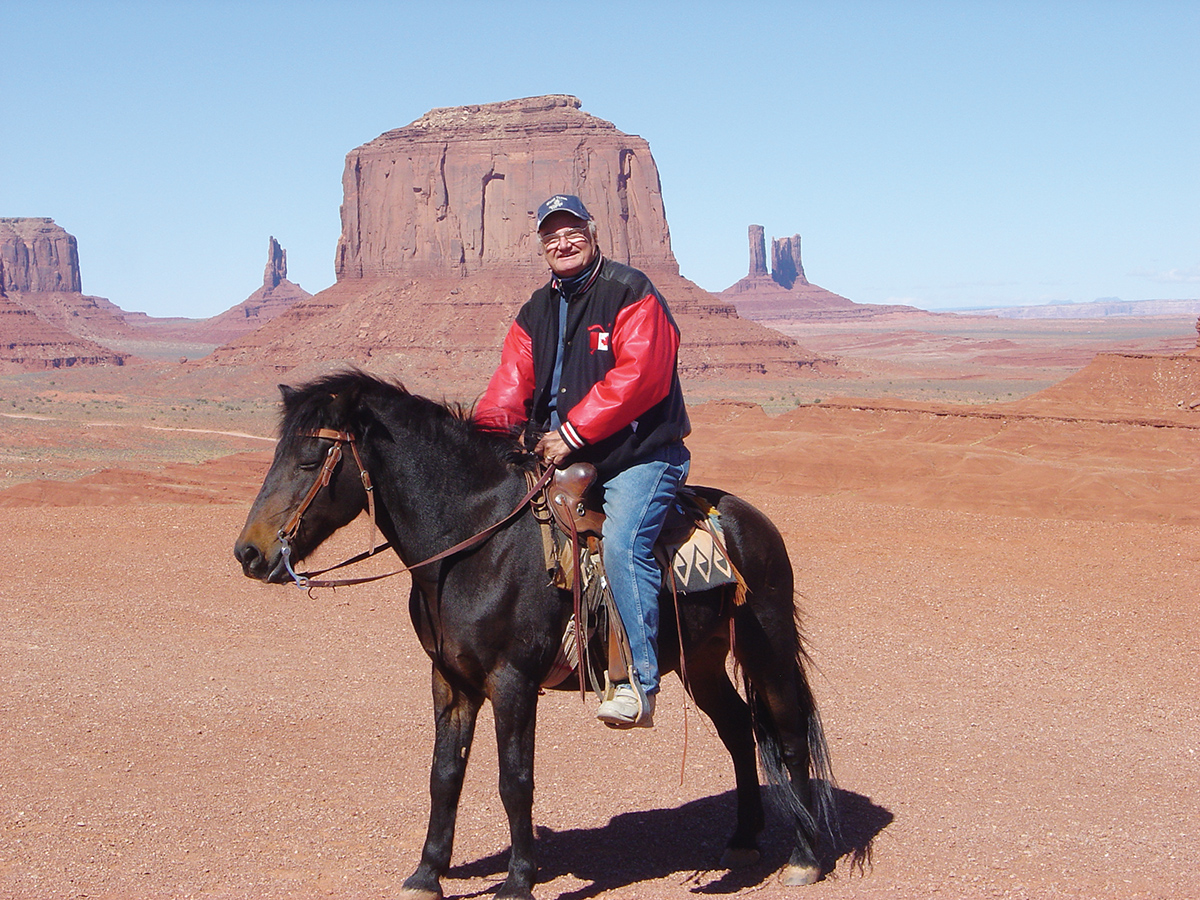
There are many tour operators leading groups on sightseeing adventures into Monument Valley. I was determined to set out on an adventure, so I joined a group of three campers, and signed up for a tour of the region. Our guide was a Navajo Indian who had grown up in the area, and he introduced us to the traditions and culture of the Navajo Nation. We visited John Fords Point, the Three Sisters, John Wayne’s Boot, the Eye of the Sun, Ear of the Wind, and so much more – the valley boasts sandstone masterpieces that tower 400 to 1,000 feet, framed by scenic clouds. The shadows of these monoliths cast shadows that dance across the desert floor, and as the sunlight plays among the graceful formations the scenery takes on a constantly changing subtlety that is simply spellbinding.
The landscape of Monument Valley is overwhelming, not only by virtue of its beauty, but by its sheer expanse. The fragile pinnacles of rock are surrounded by miles of mesas and buttes, shrubs, trees, and windblown sand formations… all comprising the magnificent colours of the valley. This is truly a wondrous place to visit.
Monument Valley is part of the Monument Valley Navajo Tribal Park; the Navajo Nation extends into the states of Utah, Arizona, and New Mexico, covering more than 27,000 square miles of unparalleled beauty. Navajoland is larger than ten of the fifty United States.
During World War II, Navajo men were recruited by the U.S. Army to create codes in the Navajo language, and many of the “Code Talkers” served on the front lines in the Pacific theatre, playing a crucial role in the war against Japan. To this day, the Japanese have not been able to break the Navajo code, and the Code Talkers are recognized for their unequalled bravery and their patriotism.
When I left Monument Valley I vowed that I would return, and I have revisited the area many times over the years. Karen and I have led three caravans to the region, and every time I return I fall in love with Monument Valley all over again. I have learned to respect the Navajo Nation as a great and wonderful people, and I am proud to have met them and visited their land.
Since my first visit, so many years ago, I have formed a very strong bond with the people and the land that we know as Monument Valley – when we last ventured into the region on our Wild West Caravan in 2007 it was like returning to our roots. I am so glad that I decided to take the scenic highway to visit my Aunt Ruth – it is amazing how many wonderful sights we drive by when we rush to get from one place to another!
“The colours are such as no pigments can portray. They are deep, rich and variegated, and so luminous are they, that light seems to glow or shine out of the rock rather than to be reflected from it.”
CE Dutton, Geology of the High, Plateaus of Utah 1880
Take care & happing RVing
M.B. & Karen Wilson
Wagon Masters
Campground Information
Goulding’s Monument Valley Resort, RV Park & Campground
P.O. Box 360001, Monument Valley, Utah, 84536
Phone 435-727-3235
https://gouldings.com/


















